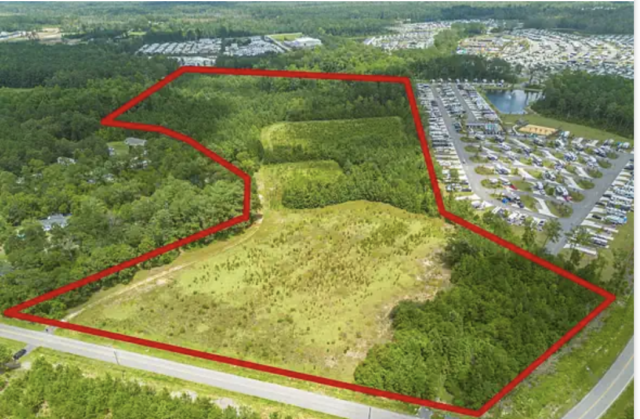For new real estate buyers contemplating the purchase of land in South Carolina, the decision can be both exciting and overwhelming. With its diverse landscapes, rich history, and unique regulations, navigating the land market in South Carolina requires careful consideration and planning. In this comprehensive guide, we’ll explore 20 essential factors to consider when purchasing land in the Palmetto State, providing valuable insights and tips to help you make informed decisions.
1. Location
Consider the location of the land carefully, taking into account proximity to amenities, schools, employment opportunities, and transportation hubs. Additionally, research the surrounding area for potential development projects or zoning changes that may affect property values.
2. Zoning Regulations
Familiarize yourself with the zoning regulations in the area where the land is located. Understanding these regulations will help you determine the permissible land uses, building restrictions, and potential for future development.
3. Property Size and Shape
Evaluate the size and shape of the property to ensure it meets your needs and allows for future expansion or development. Consider factors such as lot dimensions, topography, and natural features like water bodies or wooded areas.
4. Land Use Restrictions
Research any land use restrictions or easements that may affect the property, such as conservation easements, historic preservation regulations, or environmental protection measures. These restrictions can impact your ability to develop or use the land as desired.
5. Soil Quality
Assess the soil quality on the property, as it can affect the feasibility of certain land uses, such as farming, gardening, or construction. Conduct soil tests to determine factors like fertility, drainage, and susceptibility to erosion or contamination.
6. Environmental Considerations
Consider any environmental factors that may affect the property, such as wetlands, flood zones, or protected habitats. These considerations can impact development plans and may require permits or approvals from regulatory agencies.
7. Access and Utilities
Ensure the property has adequate access to roads and utilities, including water, sewer, electricity, and telecommunications. If the land is located in a rural area, consider the availability of well water and septic systems.
8. Natural Hazards
Research potential natural hazards in the area, such as hurricanes, flooding, wildfires, or seismic activity. Take steps to mitigate risks and protect the property from damage or loss.
9. Legal Considerations
Consult with a real estate attorney to review legal documents, such as deeds, titles, and easement agreements, to ensure clear and marketable title to the property. Address any legal issues or concerns before completing the purchase.
10. Survey and Boundary Lines
Obtain a survey of the property to determine boundary lines, easements, encroachments, and rights-of-way. A professional survey will help prevent disputes with neighboring landowners and ensure accurate property descriptions.
11. Financial Feasibility
Evaluate the financial feasibility of the land purchase, including the purchase price, financing options, property taxes, and ongoing maintenance costs. Consider the potential return on investment and develop a realistic budget for land acquisition and development.
12. Market Trends
Research current market trends and property values in the area to determine if the asking price for the land is reasonable and competitive. Monitor market conditions and seek advice from local real estate professionals for insights into market dynamics.
13. Development Potential
Assess the development potential of the land based on zoning regulations, market demand, and infrastructure availability. Determine if the property is suitable for residential, commercial, agricultural, or recreational use, and explore potential development opportunities.
14. Neighborhood Dynamics
Evaluate the character and dynamics of the surrounding neighborhood, including property values, crime rates, school districts, and community amenities. Choose a location that aligns with your lifestyle preferences and long-term goals.
15. Future Growth
Consider the potential for future growth and development in the area, such as population growth, economic expansion, and infrastructure improvements. Investing in land with strong growth potential can yield significant returns over time.
16. Land Use Restrictions
Research any land use restrictions or easements that may affect the property, such as conservation easements, historic preservation regulations, or environmental protection measures. These restrictions can impact your ability to develop or use the land as desired.
17. Property Size and Shape
Evaluate the size and shape of the property to ensure it meets your needs and allows for future expansion or development. Consider factors such as lot dimensions, topography, and natural features like water bodies or wooded areas.
18. Land Use Restrictions
Research any land use restrictions or easements that may affect the property, such as conservation easements, historic preservation regulations, or environmental protection measures. These restrictions can impact your ability to develop or use the land as desired.
19. Property Size and Shape
Evaluate the size and shape of the property to ensure it meets your needs and allows for future expansion or development. Consider factors such as lot dimensions, topography, and natural features like water bodies or wooded areas.
20. Land Use Restrictions
Research any land use restrictions or easements that may affect the property, such as conservation easements, historic preservation regulations, or environmental protection measures. These restrictions can impact your ability to develop or use the land as desired.
If you’re thinking about purchasing land in South Carolina, contact Jason Cooksey with Remax for a free Flood plane map from Horry County and FEMA.
Bibliography:
- South Carolina Department of Health and Environmental Control (SCDHEC) – https://scdhec.gov/
- South Carolina Department of Natural Resources (SCDNR) – https://www.dnr.sc.gov/
- South Carolina Association of Realtors (SCAR) – https://www.screaltors.org/
- South Carolina Department of Commerce – https://sccommerce.com/
- South Carolina Bar Association – https://www.scbar.org/
- South Carolina Land Commission – https://sclandcommission.com/
- South Carolina Geological Survey – https://www.dnr.sc.gov/geology/
- South Carolina Department of Transportation (SCDOT) – https://www.scdot.org/
- South Carolina Farm Bureau – https://www.scfb.org/
- South Carolina Department of Revenue – https://dor.sc.gov/








